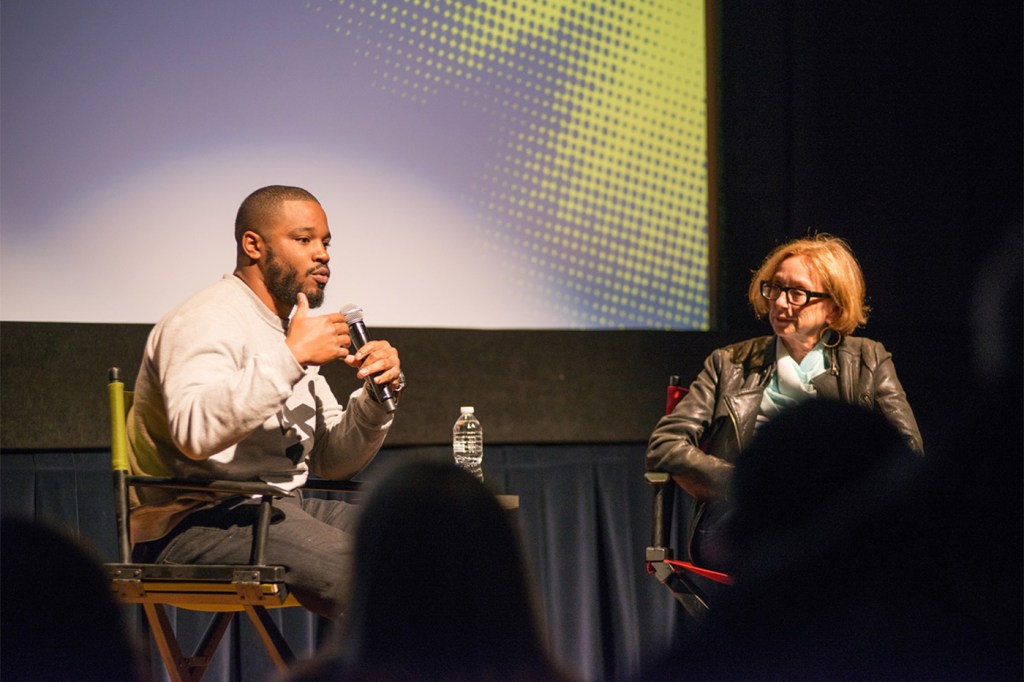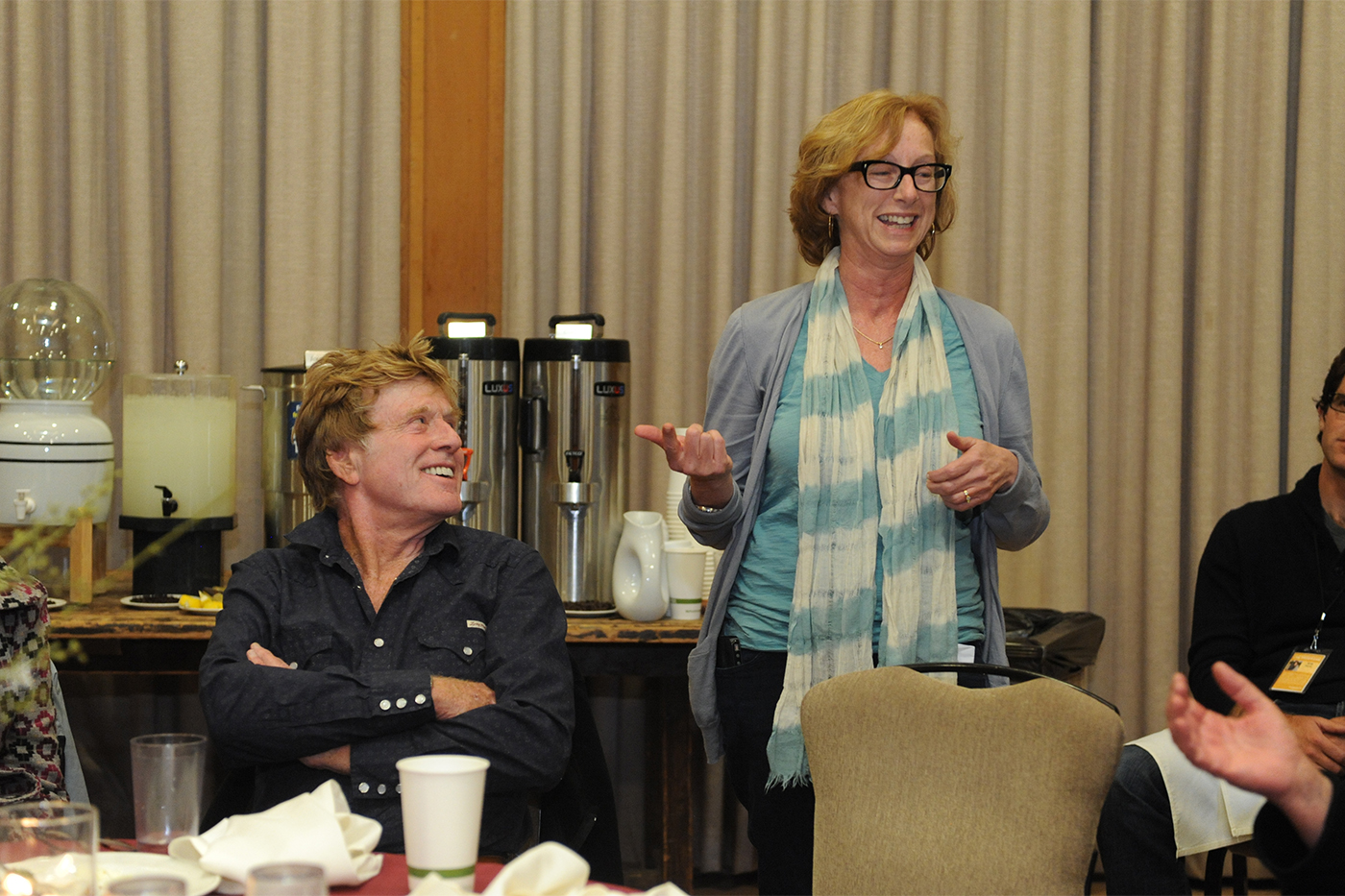Published on
A force in indie films for decades, Sundance Institute founding director Michelle Satter reflects on building next generation of filmmakers
With Satter at the helm, the Sundance Institute has helped spur the careers of countless award-winning filmmakers through its filmmaking labs, including the likes of Quentin Tarantino, Paul Thomas Anderson, Gina Prince-Bythewood and Ryan Coogler.

What do Quentin Tarantino, Paul Thomas Anderson, Gina Prince-Bythewood, Ryan Coogler, Damien Chazelle, Marielle Heller and Taika Waititi all have in common?
Outside of being award-winning filmmakers, all of them honed their skills and kickstarted their careers through the Sundance Institute’s famous filmmaking lab. They also all know Michelle Satter.
Working behind the scenes of Robert Redford’s vision for independent film, Satter has quietly become one of the most important forces in the filmmaking world for decades. The founding director of the Sundance Institute’s Artist Programs and a chief architect of Sundance’s programs, Satter has provided a platform for the next generation of indie filmmakers. In the process, Satter, a Northeastern graduate, has also ensured independent film has a future in the constantly changing landscape of Hollywood.
On Jan. 9, Satter will receive one of Hollywood’s highest honors, the Jean Hersholt Humanitarian Award, from the Academy of Motion Picture Arts and Sciences in recognition of her work. But for Satter, the Oscar is as much a recognition of the independent filmmaking community she’s helped grow as it is a testament to her life’s work.
“I will receive the award, but I receive the award for the Sundance Institute’s work, for Redford’s beautiful vision and for all the staff, filmmakers, advisors, funders and people involved,” Satter says. “I think what’s great is that the award is also a celebration of the independent filmmaking community and the next generation of storytellers. It recognizes the importance of that work and gives importance to the central value of films that engage audiences and can have an impact and make change. It’s about something bigger than one person.”
Previous recipients of the Jean Hersholt Humanitarian Award include Oprah Winfrey, Paul Newman and Michael J. Fox.
Satter’s decades-spanning passion for the arts started at birth. Her father, Warren, was a painter who regularly showed his work in Jersey Shore galleries and her mother, Helen, was a Czech immigrant and Holocaust survivor with a passion for culture who fled Prague after World War II. From the beginning she was surrounded by paintings, sculptures, music and books.
“It’s part of my DNA, the arts,” she says.
Satter graduated from Northeastern in 1974 with a degree in art history and the intent of working in the arts. She had no intentions of being an artist, but she knew that she could find a way to support artists and their work. And she did.
Soon after graduating from Northeastern, Satter started a nonprofit performing arts production company, ArtiCulture, with two friends. With ArtiCulture, Satter started programming events in Cambridge that gave touring and local dance companies, theaters and musicians an opportunity to perform and gave audiences the chance to experience their work.
At the same time she started to fall in love with film. She discovered the Orson Welles Cinema in Cambridge and would regularly spend entire afternoons watching films from the international masters: Akira Kurosawa, Ingrid Bergman and Francois Truffaut. Those moments spent in double or triple features became her film school.
“I had always loved storytelling, but I fell in love with the immersion of storytelling from such different lenses,” Satter says.
Satter worked briefly as the director of PR at the Institute of Contemporary Art in Boston, putting her art history degree to work, before she got the call that changed her life.
In 1981 she was invited to Robert Redford’s Sundance Resort in Utah to help with organizing the first filmmakers labs. The Sundance Film Festival wasn’t yet established as the marquee destination for independent filmmakers that it is now when Redford and a small team were just starting to set up the Sundance Institute.

The first lab, launched by a team including Jenny Walz Selby in 1981, gave writers and directors with some level of experience the opportunity to learn the craft of filmmaking through a rigorous workshop with industry experts. Most had directed a short film and had written their first feature, while others joined having established their early work in other storytelling forms and needed creative guidance. According to Redford’s vision, the model was built on experienced artists passing on their knowledge to the next generation of artists, what Satter calls “contributing forward.”
Initially, Satter was brought out to Utah to help in organizing a three-day producers’ weekend. She never left.
“I fell in love on day one at Sundance and found a way that I could convince Redford that I should stay on, which I have done,” Satter says.
Satter convinced Redford to let her launch the Sundance Institute’s Los Angeles office in September 1981 and eventually became the founding senior director of Sundance Institute’s Artist Programs. When Satter first started working for the Sundance Institute in the early 1980s, independent film was in desperate need of support. The halcyon days of 1970s independent cinema had given way to the early age of effects-driven blockbusters in the 1980s.
“A lot of great movies were made, but there wasn’t that room for a next generation of filmmakers,” Satter says. “The idea of supporting filmmakers who had projects –– early stage drafts of scripts, possibly had directed a short film –– and providing them with a place to learn the craft, learn the skills, test their work, experiment, take risks, push their boundaries –– it was an incredible opportunity for artists to have that space to develop their work and build a community.”
The vision for the Institute’s work has expanded to also include documentary film, television and even interdisciplinary. But the Feature Film Program labs remain famous for shepherding early drafts of now legendary filmmakers to the big screen.
Tarantino’s classic “Reservoir Dogs” is well known for its Sundance lab journey, and Anderson’s “Hard Eight” and Coogler’s “Fruitvale Station” also benefited from the intensive workshops.
“I get great joy out of discovering voices, creating a community and safe creative space for learning and seeing new work come to life with audiences at the Sundance Festival or other festival opportunities,” she says.
Satter recalls the energy and rigor Coogler brought to the writing process for his “Fruitvale Station” screenplay. The film, which tells the story of Oscar Grant, a young Black man who was killed by police in Oakland, California, in 2009, was a personal one for Coogler, an Oakland native who is now known for directing Marvel’s “Black Panther” films.
Satter admits she was nervous when the film first screened for audiences at the 2013 Sundance Film Festival.
“I always want people to respond to the films that we’ve put our energy and support into,” Satter says. “At the premiere you could feel everybody leaning forward and experiencing the film in a powerful way,” Satter says. “The film was over and except for hearing people sobbing, it was quiet, followed by a very long standing ovation.”
“Art has the opportunity to make change, to be part of the cultural conversation, to make real impact, and impact matters to me,” Satter adds. “It’s important that films engage and entertain an audience, but I’m also interested in what they are putting out into the world and how that can change the conversation.”
When Anderson, the now-renowned auteur behind “There Will Be Blood,” “The Master” and “Boogie Nights,” came through the Feature Film Program with his film “Hard Eight,” he was further along than some filmmakers in the labs. He came in with his stars already attached to the film, ready to do the work.
“His excitement on set was so infectious you just fell in love with watching him work with these wonderful actors, Philip Baker Hall and John C. Reilly,” Satter recalls with a chuckle. “It was hard to get our advisers off the set and go to other sets because they were having so much fun watching him.”
Throughout the years Satter has always approached her work with the idea that a key part of the creative process is failure. The artists who go through the Sundance filmmaking labs are there to learn how to bring their creative vision to life. It’s experiential education at its finest.
“There’s no such thing as failure,” Satter says. “You don’t fail; you make a mistake, you learn, you move on. Failure is an opportunity for learning, simply that. It’s a stepping stone to continue to do your work.”
Part of the way Satter has ensured the success of both the Sundance Institute and the longevity of the filmmakers who come through its programs is by providing support throughout the filmmaking process. Advisors are on hand to read next drafts of scripts, help find producers, financing and the right festival to premiere their film. The Sundance Institute also provides grants for filmmakers in all stages of the process.
All of those resources are more necessary than ever in an independent film ecosystem that faces significant challenges. The theatrical model and many art house theaters that supported independent cinema for decades have been extremely challenged with the advent of streaming, and distributors are less willing to take a risk on an original independent film than a franchise or well known IP, Satter says.
“We’re in a moment of change, and we have to adapt to that change,” Satter says. “I don’t think we have all the answers, but I think it’s an important moment to be trying things, to be working as collectively as we can.”
But Satter is still confident that independent film and Sundance have a role to play in the future of Hollywood and global cinema. The recognition from the Academy is a reminder of that, she says. And if the recent craze around “Barbenheimer” proves anything, it’s that audiences are still eager to experience movies in the theater, movies that are not the latest addition to a franchise but singular visions from a skilled filmmaker.
“If you look at the directors of ‘Barbie’ and ‘Oppenheimer,’ they both came from the independent world with their first features,” she says. “Their new films are bigger ideas than their first films, but they express their unique voices and have been successfully released globally with entertainment, vision and a great marketing campaign.”
“Independent cinema is not going away, as the next generation of storytellers is essential to the ecosystem, let’s just say that,” Satter says.
Cody Mello-Klein is a Northeastern Global News reporter. Email him at c.mello-klein@northeastern.edu. Follow him on Twitter @Proelectioneer.





